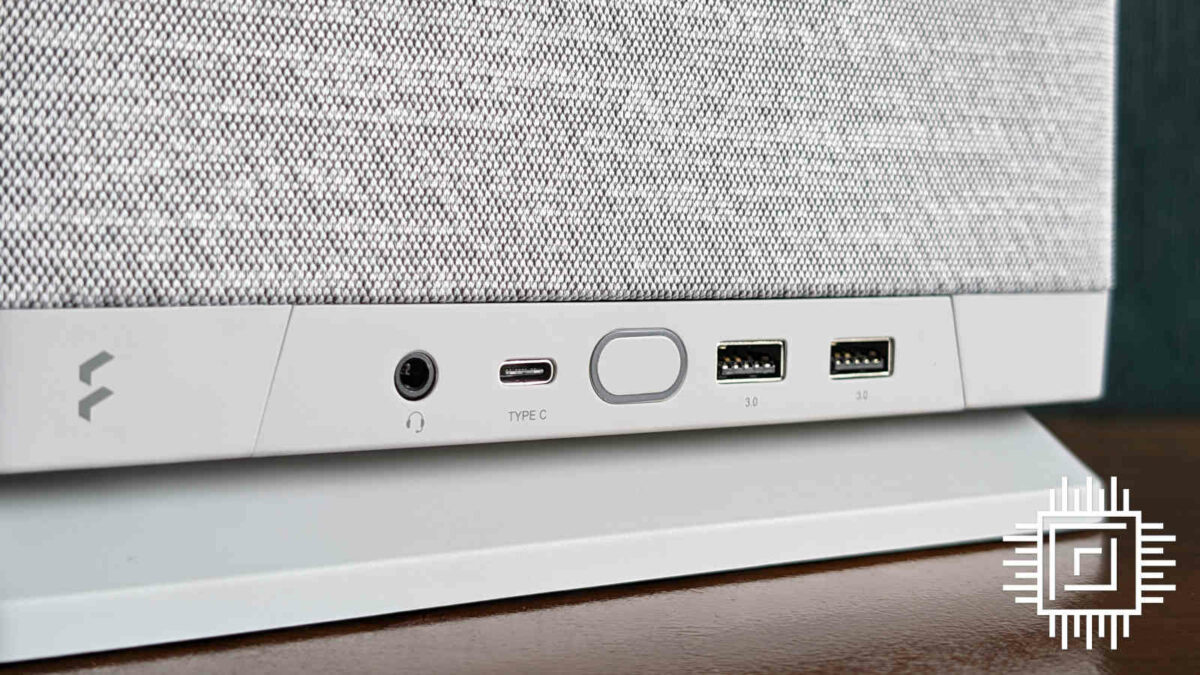Fractal Design has quickly garnered a reputation for innovative and stylish cases, but Mood is one of the most unique offerings from the company to date. A fabric shell makes it a maverick among its typically metal brethren, but this chassis is certainly not forgoing substance for style.
Since Fractal Design Terra hit the scene, I’ve been mulling over whether my next build should be Mini-ITX. Following the Mood Computex reveal, though, I’m glad I waited for the company’s latest. Without spoiling too much, this case has proven to be fabulous from top to bottom in the time I’ve spent with it.
Specs
At 212mm in length and width, Mood boasts a small horizontal footprint. However, it stands tall at 453mm, rubbing shoulders with competing cases, including Corsair 2000D RGB Airflow. Its raised feet account for a handful of millimetres, creating a convenient cove for cables to route out the back. Fractal Design hasn’t neglected front I/O, though, with a solid selection of ports. More specifically, the company equips Mood with two USB 3.0 Type-A ports, a single USB 3.2 Gen 2×2 Type-C, and a 3.5mm combo jack.
Mood is both small and slight at 4.6kg. Components will make any completed build much heavier, but this is a perfectly agreeable starting weight. As you’d expect from its cuboid shape, it’s easy to handle, too. However, its fabric exterior does require an extra degree of care, as it’s naturally more prone to staining. Still, this due diligence isn’t a massive ask, and the material is pleasant to touch.
| Fractal Design Mood | |
|---|---|
| Dimensions (LxWxH) | 212 x 212 x 453mm |
| Weight | 4.6kg |
| Motherboard support | Mini-ITX |
| PSU length | 130mm |
| Fans | 180mm (x1) |
| AIO compatibility | Up to 280mm (front) |
| Max. CPU cooler height | 110mm |
| Max. GPU length | 325mm |
| Price | $149.99 |
Inside, there’s 20.4L of volume to play with. While not the largest you’ll find in similarly sized chassis, it’s plenty for most Mini-ITX builds. The case supports both SFX and SFX-L power supplies up to a maximum length of 130mm. Meanwhile, CPU cooler heights top out at 110mm. Regarding graphics cards, there’s room for dual-slot designs with a maximum length of 325mm.
Fractal Design includes a single 180mm fan with every Mood positioned at the top of the case as an exhaust. A PCIe 4.0 riser cable also comes as standard, alongside two additional 2.5in drive brackets and cable straps/ties.
Design
At first glance, Mood looks more like a large, high-end smart speaker than the average PC case. That’s not an insult, though, as I appreciate how well it blends in to practically any environment. It’s a chameleon computer of sorts, equally capable of fitting into a gaming room, office, or lounge. In fact, to my eyes, it sits better next to my TV than my PlayStation 5 does.
It exudes such a pleasing aesthetic quality thanks to its fabric exterior. Our sample sports a grey colouring, with shades that’ll perfectly please Millennial minimalists, but a black version is also available. Fractal Design has done a wonderful job on the finish here, with no seams or screws spoiling the chassis’ splendour. The two-tone effect created by its semi-gloss plastic top and bottom makes for a nice subtle contrast, too.
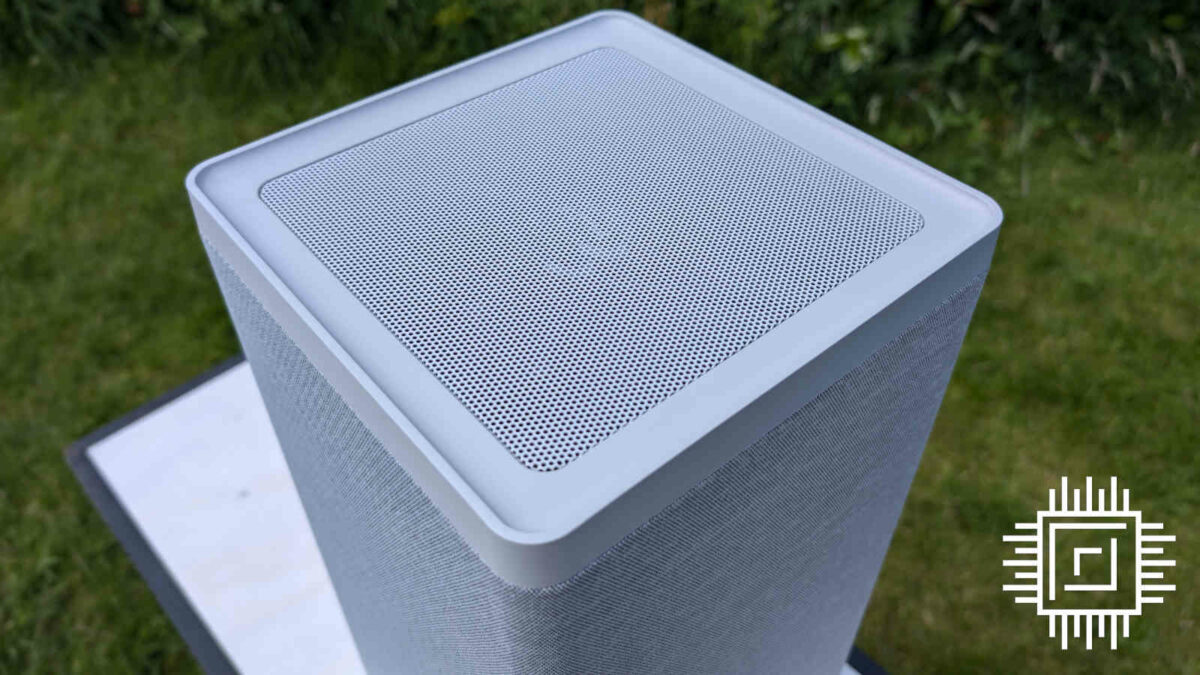
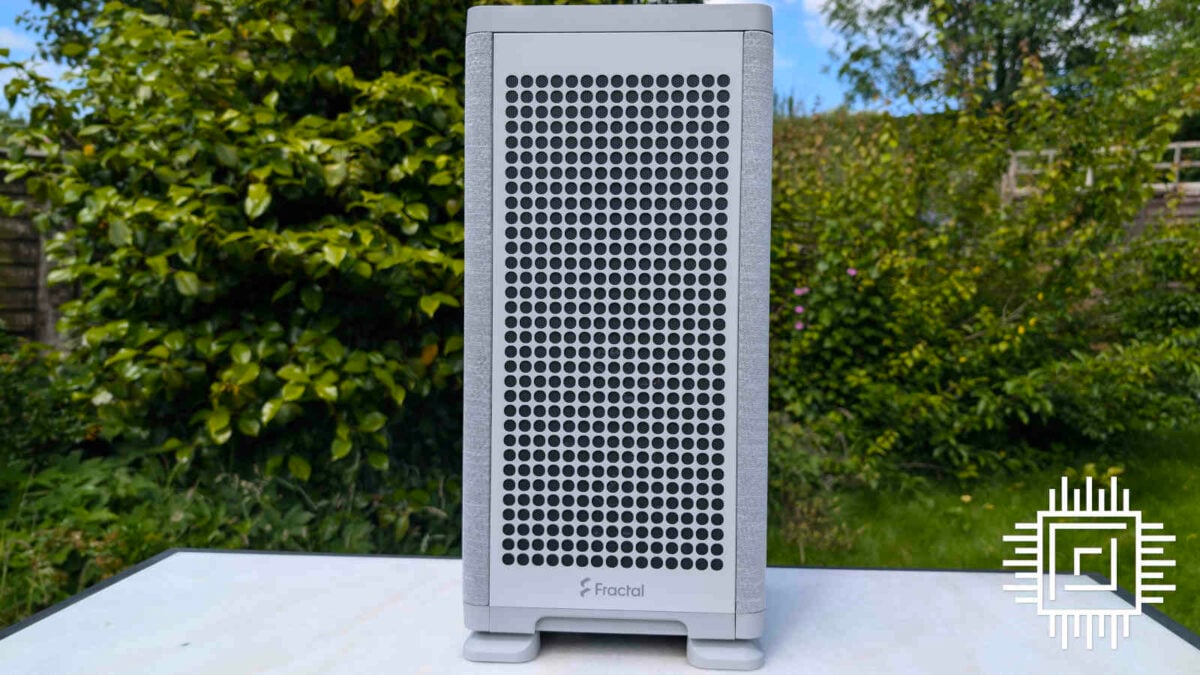
While the face and sides prioritise appearance above all, the case takes a distinctly more functional appearance around the back. Gone is the fancy fabric, replaced by a removable panel filled with punch holes. While this does interrupt the uniform look of the case, it’s a design decision that’s easy to forgive. After all, it greatly improves airflow to the graphics card, and you’ll rarely see it, given its position. To Fractal Design’s credit, the panel still looks and feels premium, if not slightly reminiscent of a posh cheese grater.
The recess on the bottom of the rear panel serves as your access point. However, this is the only part that’s toolless. You’ll need a screwdriver handy to remove the two small locking screws that hold the shell to the frame. Once they’re out, though, the case comes apart in one smooth motion following its rails, giving us a 360° view of its internal structure.
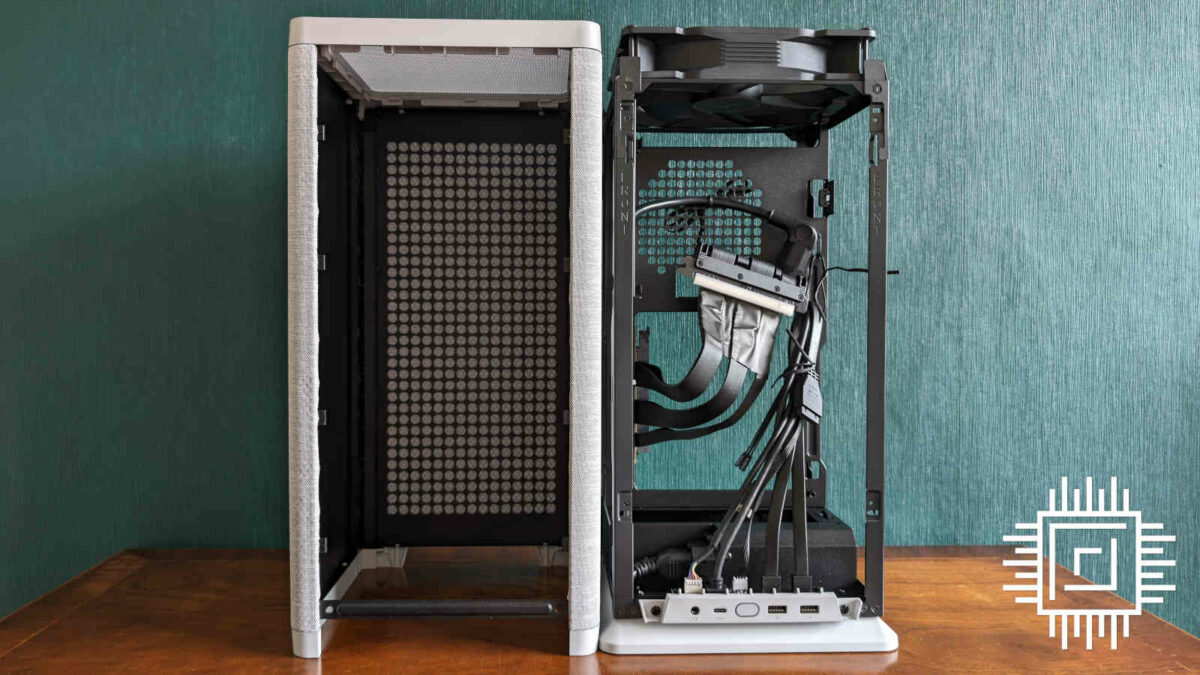
Kudos to Fractal Design for including a few blocks of internal protective foam to mitigate any mishaps during shipping. It’s a minor inclusion in the grand scheme of things, but nonetheless reinforces the premium nature of Mood and how much care has gone into its design. With those out of the way, we’re ready to start filling the case with components.
Mood’s design creates an exceptionally positive first impression. Its fabric exterior is unlike anything I’ve ever seen on a PC case, providing elevation and innovation to the space in equal measure. Much as I’m still a fervent fan of metal and tempered glass, Fractal Design has made something truly unique and cool here.
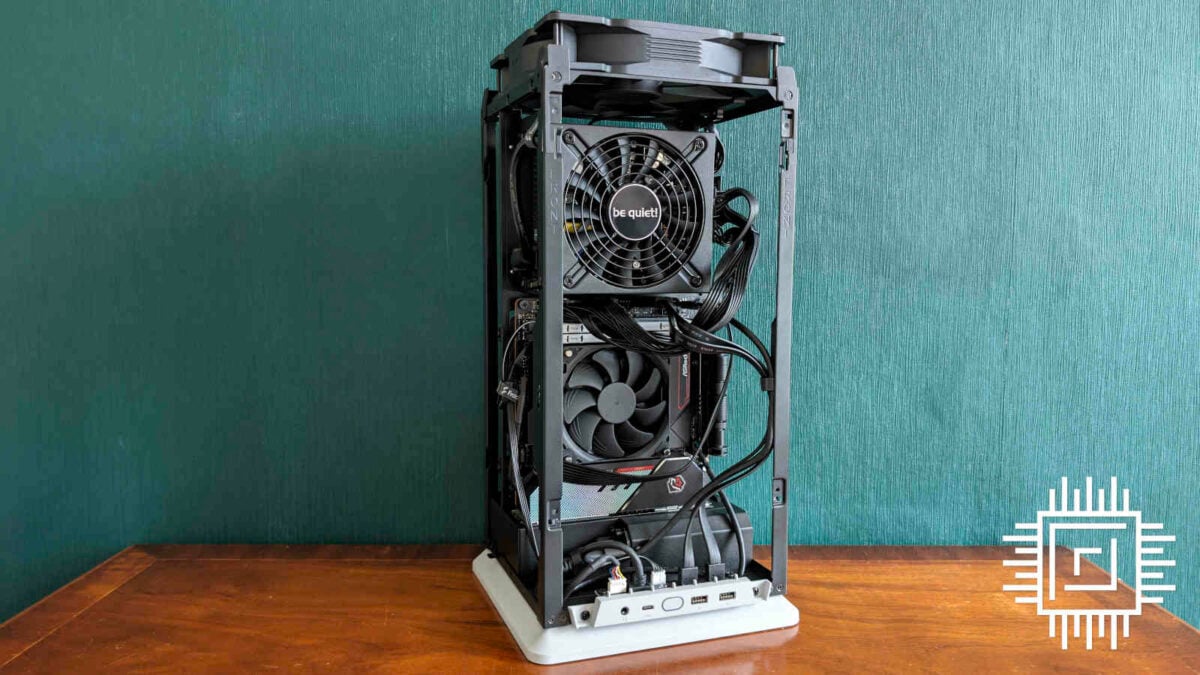
Building with Mood
Small form factor (SFF) systems can be a nightmare to put together, but building inside Mood is a breeze. Naturally, ample preparation makes the process all the smoother, but the case is forgiving for most on-the-fly adjustments. No Mini-ITX chassis is foolproof, but this is damn close.
Fractal Design includes a user guide that is well worth reading, regardless of your SFF experience. The manual is particularly invaluable for those wanting to use a single 3.5-inch drive or up to two 2.5-inch ones. I’m a firm M.2 storage convert these days, but it’s good to know there’s support for all form factors. Plus, in my eyes, the fewer elements obstructing airflow in such a constrained space, the better.
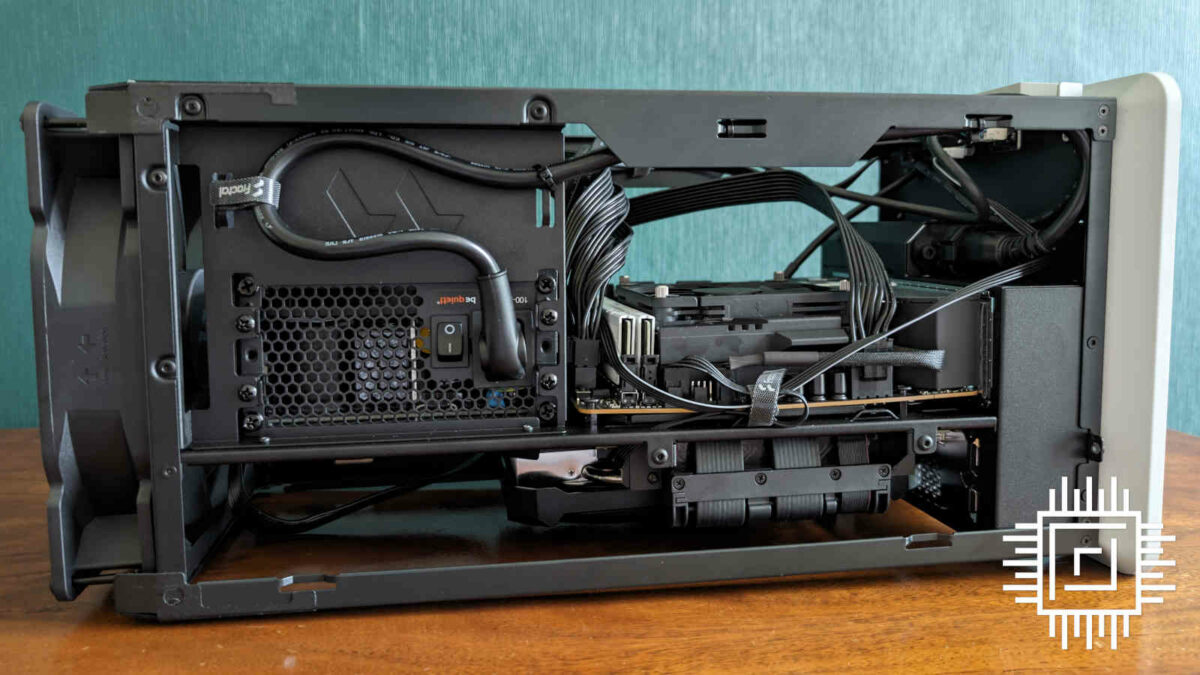
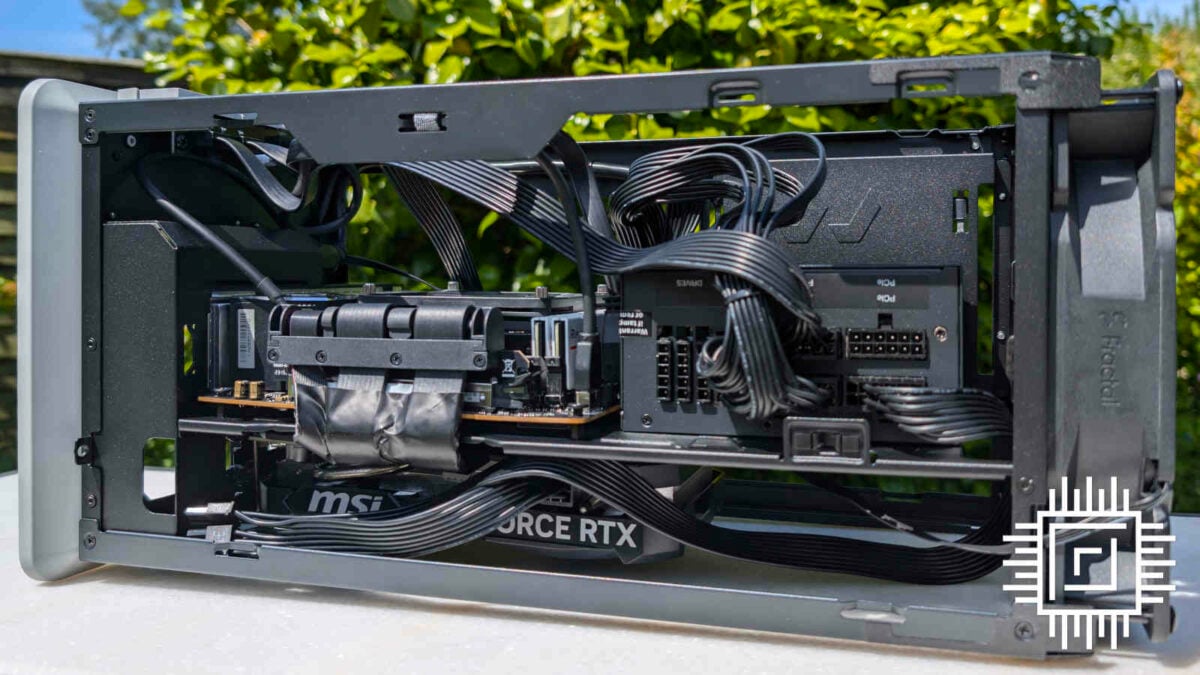
While nothing’s stopping you from using the best CPUs and the best graphics cards, I’m erring on the side of caution for now. I’m equipping the case with an Intel Core i5-13400F processor cooled by a Noctua NH-L12S. As you can see from our images, the low-profile cooler is well within Fractal Design’s tolerances. Getting everything in, RAM and SSD included, atop an ASRock Z790 PG-ITX/TB4 motherboard is fuss-free. This is expectedly the easiest part of the build, but upcoming challenges are thankfully minor.
Convenient as air coolers are in SFF builds, Mood supports a single 240mm radiator if you’re adamant about AIOs. While this does introduce more cables to manage, a liquid cooler should help improve airflow in the case thanks to the introduction of more fans. Just bear in mind that there’s no fan controller included here, so setting custom curves is a must.
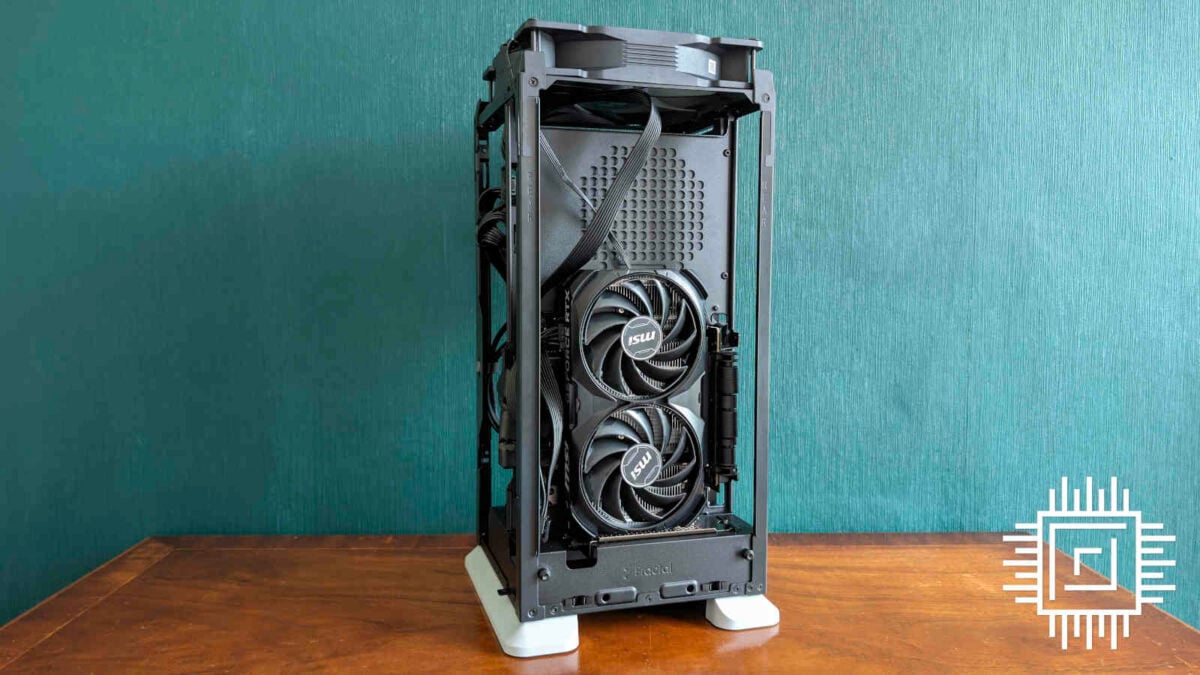
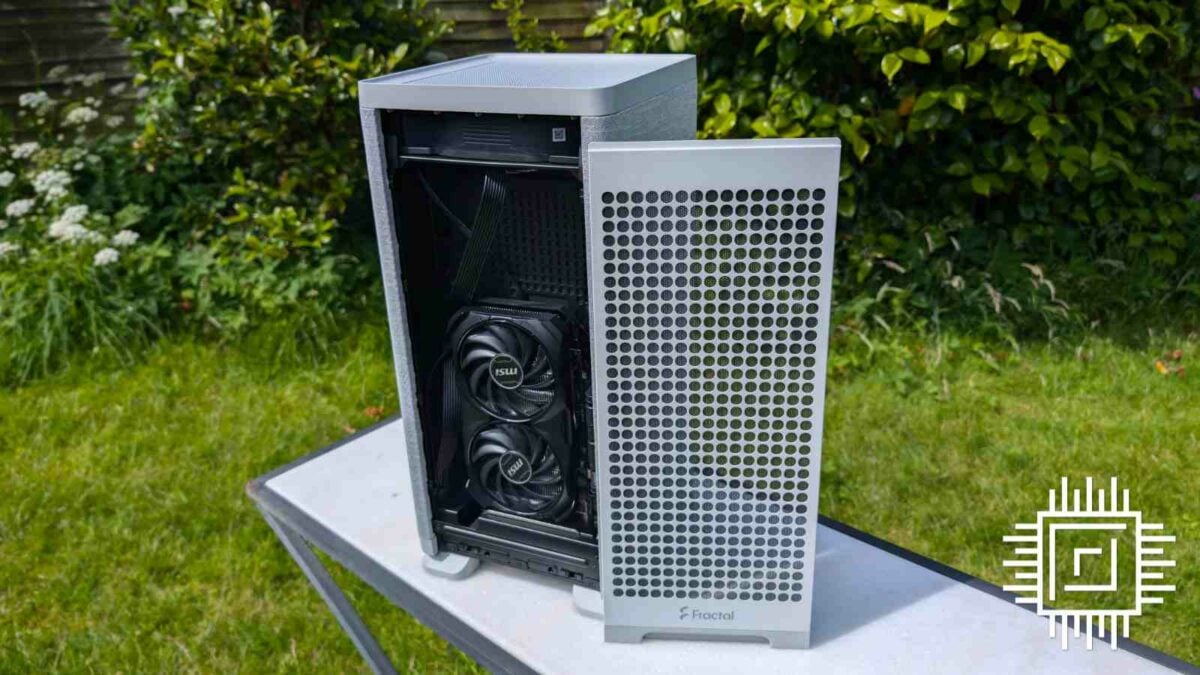
Around the back, we have an MSI GeForce RTX 4060 Ventus 2X measuring in at a mightily minute 199mm. There are no issues with clearance here, and I’m confident the case will handle larger graphics cards (up to 325mm) with ease. Installation is simple but not entirely smooth. The GPU inserts into the PCIe riser at a slight angle, straightened out by expansion slot screws. I’ve experienced enough to know this strain wasn’t liable to break anything, but I can see this creating anxiety in some builders.
The most difficult part of building in Mood was managing the cables routed from our be quiet! power supply. While there are plenty of cut-outs to route straps, ties, and wires through, they can be finicky. For instance, while routing an eight-pin connector to our graphics card, I gave up with the presumed designated hole and instead threw the thing over the case’s spine. There’s also the ATX 24-pin, whose tensed curve can catch on the exterior as it ascends and descends.
Not to make mountains out of molehills, these cable troubles are a minor bump in an otherwise easy-going building experience. After all, worrying over wires is somewhat par for the course with SFF builds. My finished system was ready to go in around two hours and would’ve been slightly sooner if not for one hiccup that makes up my only major criticism: you can’t access the power switch from outside the case once the PSU sits snug, and you close it up. It’s something Fractal Design needs to address if we’re fortunate enough to see a successor.
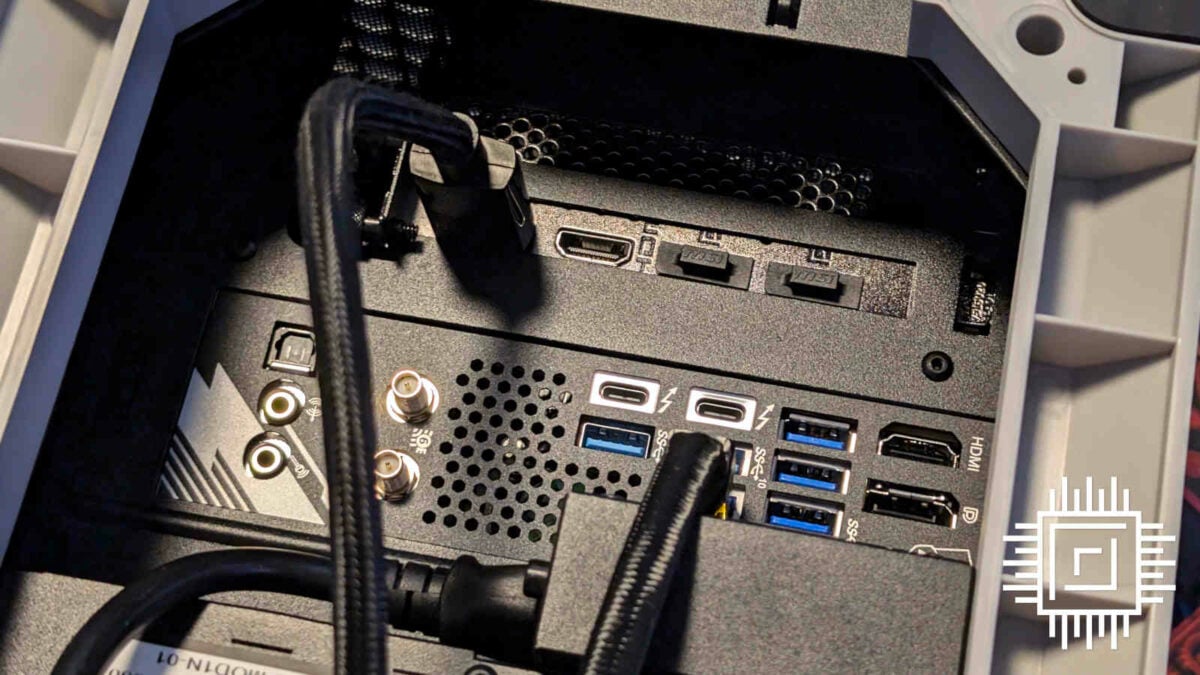
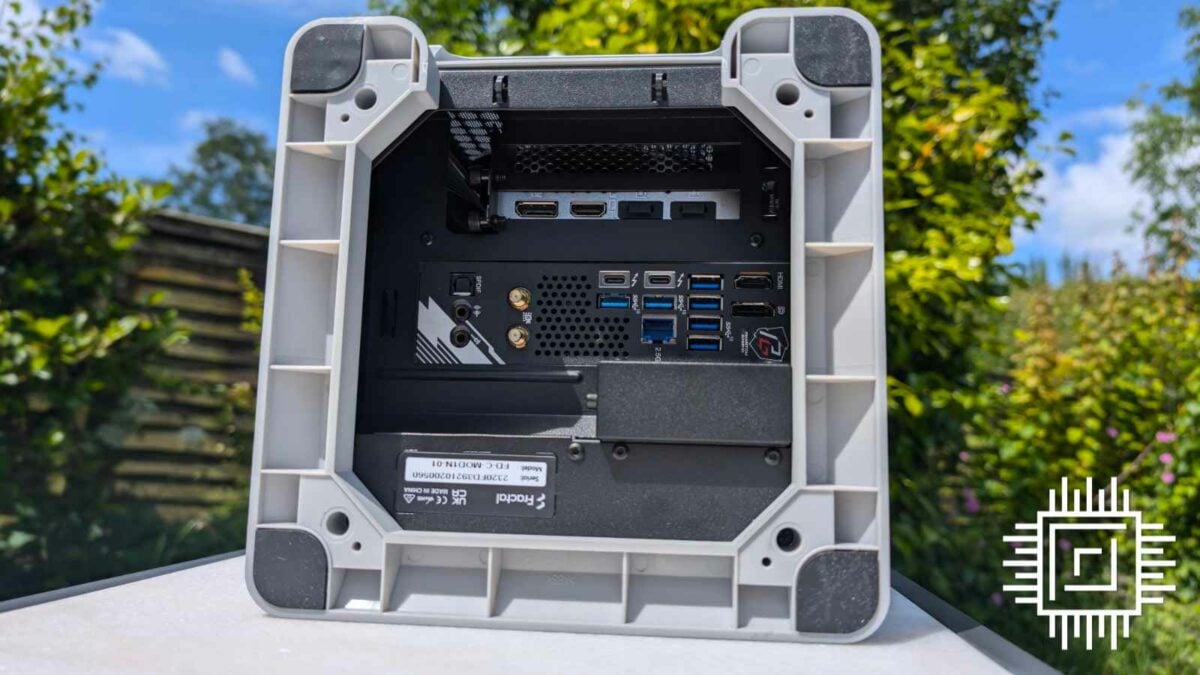
Performance
Fractal Design crafted Mood with negative air pressure in mind, but the included 180mm fan exhausts an impressive amount under load. That said, even with fabric partly obstructing the front intake and completely solid side panels, the case manages to keep its cool. It has to work a little harder (and louder) to do so, but the results are impressive given the circumstances.
I applied the same modest fan curve to the CPU cooler and 180mm exhaust, with RPM automatically adjusting with CPU temperature. This left the chassis running almost silently while idle at 32dBA. Naturally, gaming pushes noise levels up to 49dBA, with Cinebench 2024 creating a ceiling of 60dBA. All in all, this is perfectly tolerable, provided temperatures are under control.
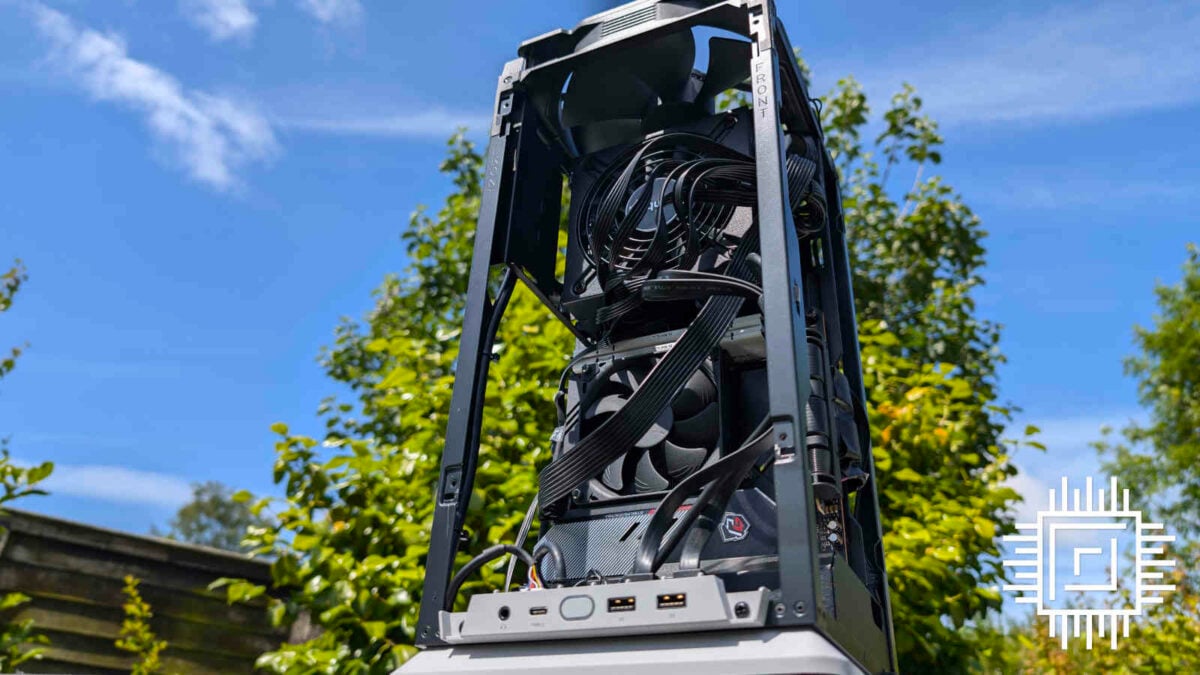
Using Cinebench 2024 as a worst-case scenario, our Core i5-13400F behaves as we’d expect it to. After briefly hitting its turbo clocks, the processor settles to a more stable 3.8GHz across its performance cores, pulling 65W. While it does so, its package averages at an acceptable 68°C. Naturally, it’s much cooler running most games and conducting general tasks.
While temps will fluctuate depending on coolers and ambient temperature, Mood certainly gives us no cause for concern. To provide as much airflow as possible, I recommend either running a 280/240mm AIO or adding two additional 120/140mm fans to the front of the case.
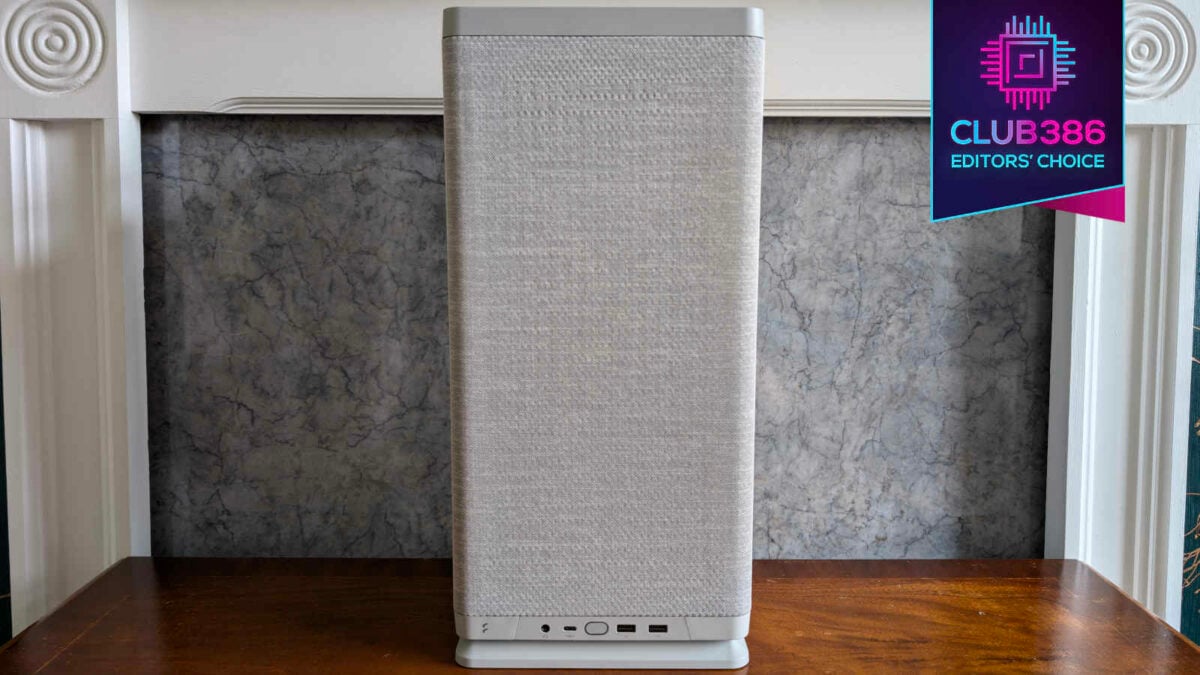
Should you buy it?
There’s nothing else on the market that looks quite like Mood. As such, its $149.99 price tag feels entirely reasonable, even if it’s slightly more expensive than some competitors. More importantly, though, there’s very little to complain about. Fractal Design has truly smashed it.
Mood is suitable for experienced and novice SFF builders alike. It’s stylish, easy to build in, and maintains good airflow to boot. If you’re after something slightly different for your next Mini-ITX case, the latest from Fractal Design comes thoroughly recommended.
Fractal Design Mood
Verdict: Pushing PC case aesthetics and design in a great new direction, Mood is a triumph.
Pros
Beautiful fabric design
High-quality materials
Easy build experience
Solid airflow
Cons
Inaccessible PSU switch
Need tools for full entry
Buy

